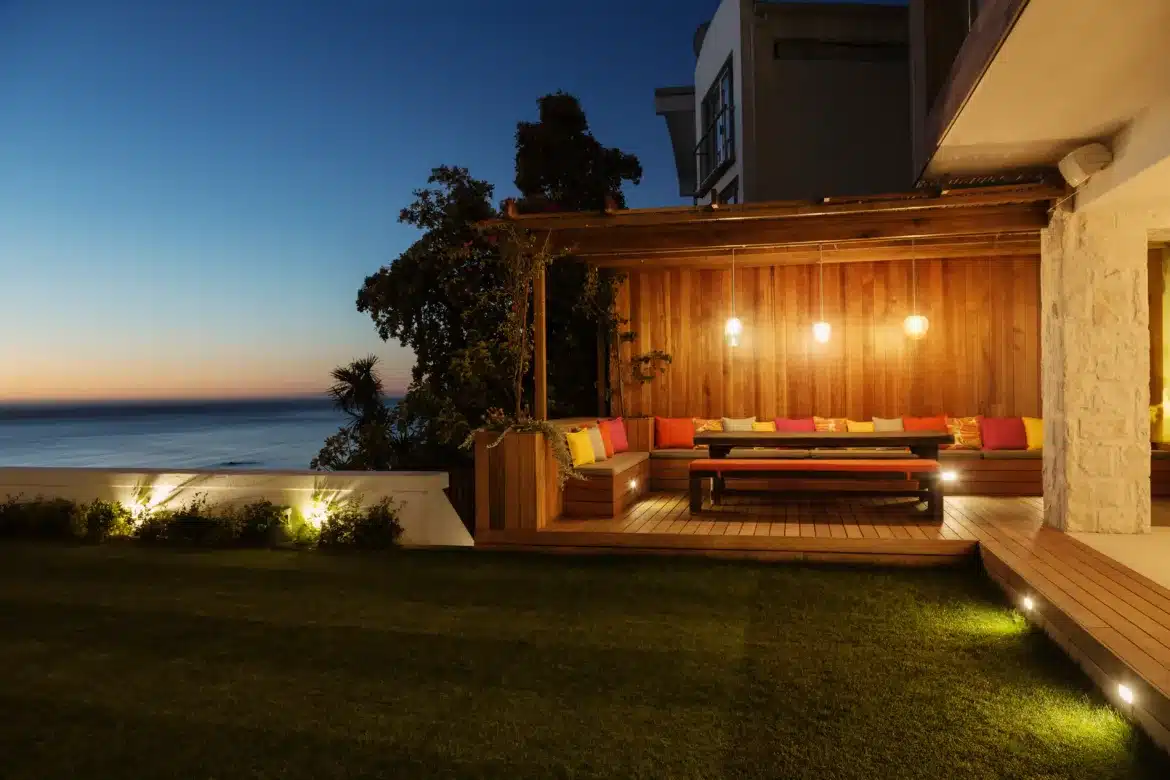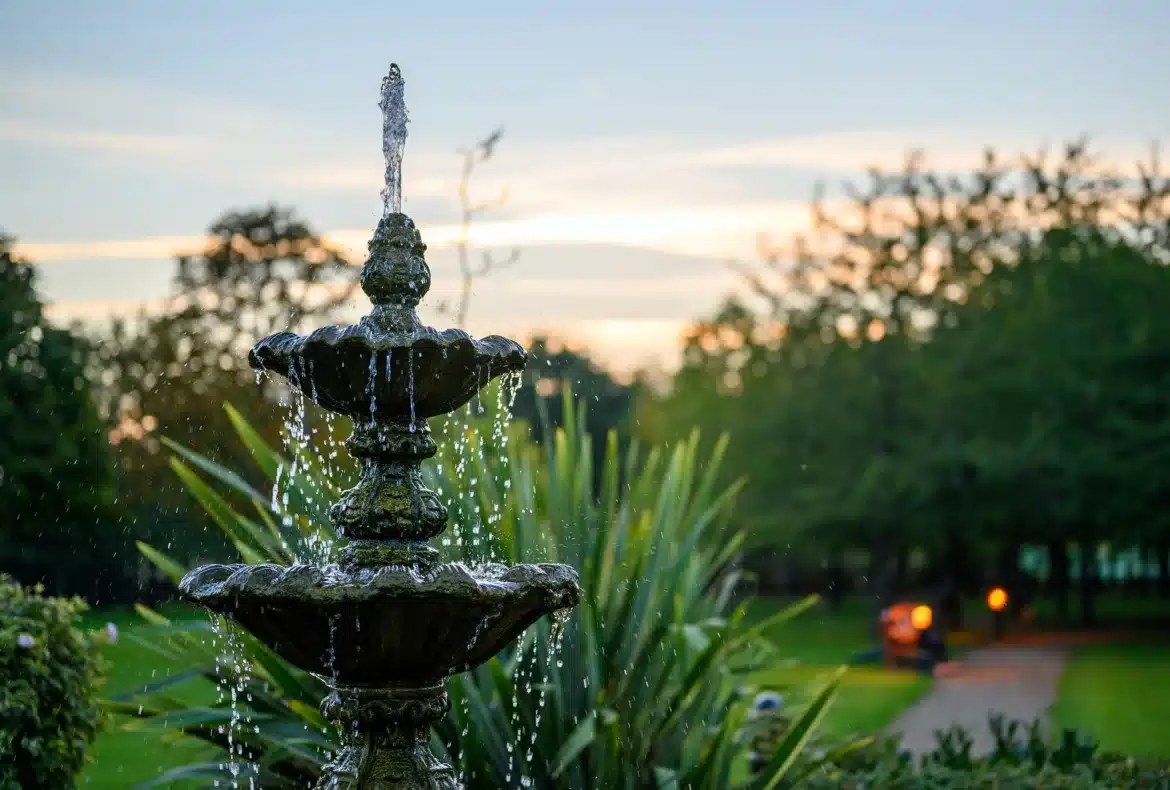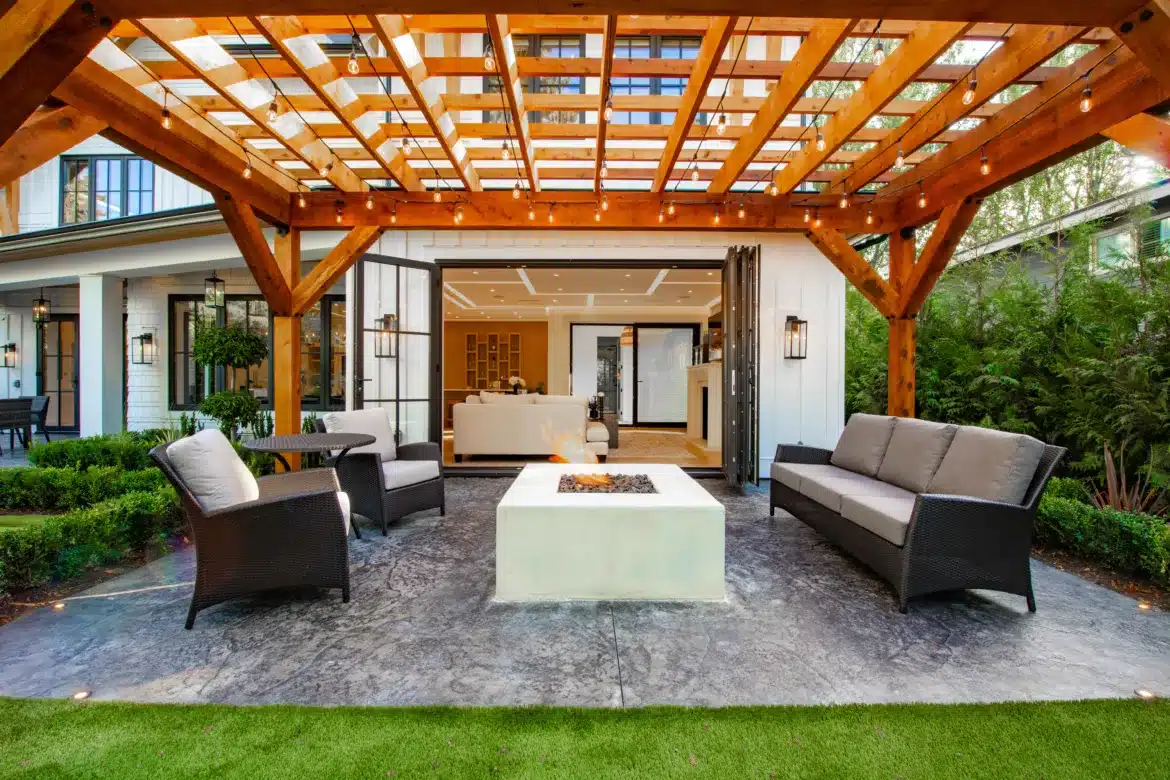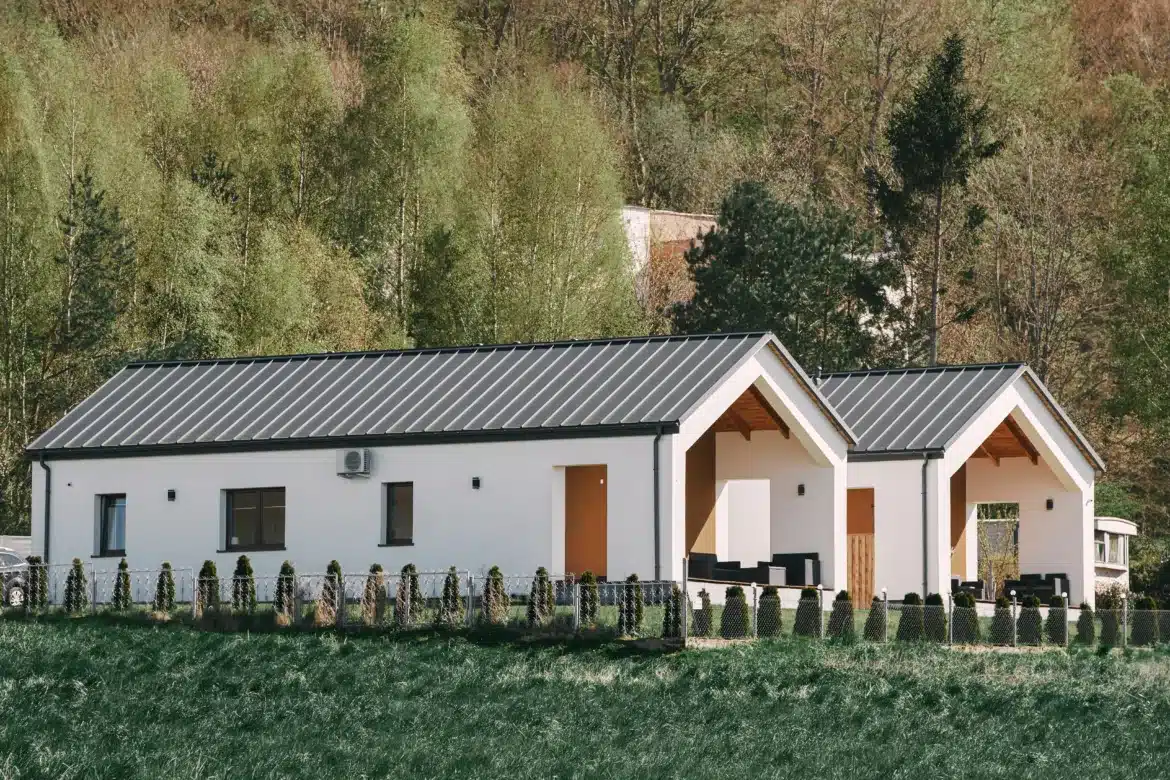When the golden hour cascades into velvet dusk, and your home’s exterior breathes anew under the moon’s soft gaze, you stand at the threshold of a design frontier — landscape lighting. More than merely illuminating pathways and features, a well-crafted outdoor lighting scheme transforms your property into an ethereal realm. In this guide, we unveil the techniques and technologies that can elevate your nocturnal naturescape to a tableau of elegance and functionality. Whether you relish the serenity of a moonlit garden or love to orchestrate al fresco soirées, this post is your beacon in the twilight.
The Artistry of Illumination
Light is a material of architecture — an element so dynamic and fundamental that it can sculpt space as eloquently as brick and mortar. In the realm of landscape design, the mastery of light is twofold. It serves a functional purpose, guiding feet through mazes, and highlighting the nocturnal beauty of your greenery. Simultaneously, light shapes the after-dark ambiance, dictating the mood of your outdoor environment. At the crossroads of function and feeling lies the artistry of landscape illumination — and it’s a canvas awaiting your vision.
Architectural Grazing and Washing
One quintessential technique that articulates the face of your home after the sun sets is architectural grazing and washing. Grazing involves emitting light in parallel lines along a vertical surface to bring out its textures, while washing uses a broader beam to softly bathe façades, offering warmth and dimension to your home’s nighttime profile. Textured walls, beautiful brickwork, and every nook and cranny take center stage, turning your property into a sculpture in the soft, incandescent glow.
Silhouetting and Shadow Play
Harnessing the interplay of light and shadow is an ancient art, and one suitable for both your indoor and outdoor spaces. Silhouetting, the technique of backlighting to create pronounced outlines, adds drama and focus to garden elements. Meanwhile, shadow play — wherein the light source is placed behind a structured framework — can project intricate shadows onto walls, hedges, and open expanses, weaving a captivating latticework of silhouettes across your canvas.
Moonlighting and Starlight Effects
To mimic the celestial ballet that graces our earthly evenings, moonlighting recreates the gentle glow of the moon, employing lights high in trees to cast a muted radiance downward. Starlight effects, on the other hand, pepper the night sky with upward-beaming twinkles, lending a touch of magic to clear-sky nights. Both techniques rely on subtle, upward-throwing fixtures, creating a profoundly naturalistic nocturnal atmosphere.
Guiding Light and Safety
While elegance is an essential pursuit in landscape lighting, the safety and guidance of your outdoor occupants are paramount. Strategic placement and luminosity are your aids in this endeavor, ensuring that your family and guests can both see and be seen, safeguarded from unseen hazards and potential mischief. Pathway lights, bollards, and step lighting all serve to guide with a gentle hand while blending seamlessly into your design aesthetic.
Inviting Entrances with Downward Glows
The point of arrival — be it a front gate or the archway to a pergola — is the threshold between the day’s toil and the night’s reprieve. Lights positioned high and artfully aligned to create a downward-glow effect are especially effective in signaling a warm welcome, adding that touch of theatre to one’s homecoming.
Focal Points and Navigation
Beyond the grand entrances lie the outdoor spaces themselves, intricately connected by paths that not only meander but also guide and direct. Employing lighting to accentuate focal points, junctions, and obstacles maintains an air of invitation while providing unobtrusive guidance, ensuring that the evening’s festivities flow with grace and safety.
A Crescent of Clarity
Creating a well-lit periphery is essential for maintaining the cocoon of your home’s safety. A combination of floodlights and motion-activated lights along the border lends that crescent of clarity, dissuading unwelcome visitors without shrouding your abode in a prison of light.
Layers of Light to Enliven Every Corner
Just as indoor spaces are brought to life with layers of light, so too should the outdoors be orchestrated. Variance in intensity and color temperature can sculpt the landscape, imbuing it with layers of varying purposes — from the dramatic to the sublime.
Ambient, Task, and Accent Lighting
Your outdoor rooms — from living spaces to dining alcoves — benefit greatly from the delineation that task and ambient lighting provide. However, it’s the acclamation of ambient illumination, bathed in the gentle hues of the evening, and seasoned with accents that tell stories of the spaces they alight, that truly finesses your landscape’s character.
Hues and Their Harmonies
As the diurnal spectrum is painterly, so should be your treatment of light. Warm ambers and cozy candlelight colors reflect the festivities of gatherings, while the cooler blues evoke the tranquility of a solitary walk in the garden. Harmony of hues is your plaything; however, mind the contrast, for in darkness, the effect is heightened.
Festive Lighting for Celestial Celebrations
Special occasions warrant special treatments. Be it the festooning of tree branches with strings of lights, the draping of architectural features with fabric-warmed glows, or the delicate twinkle of light sculptures, festive lighting has the power to elevate celebrations into exuberant recognition.
Repelling the Nocturnal No-See-Ums
While illumination dances with intrigue and elegance, it also serves an integral function in the night’s ecological theater — discouraging the pests that feast on darkness. Bugs, moths, and other nocturnal no-see-ums are drawn to ultraviolet and blue wavelengths, so opting for yellow, amber, or pink-hued bulbs can simultaneously darken your night’s menu to these unwanted gustatorial interludes.
Lighting Controls and Technology
In the grand play of turning day into night, technology plays a pivotal role. Timers, sensors, and dimmers allow for the choreographing of nightscapes with precision and convenience. From the minimal intervention of dusk-to-dawn sensors to the palpable control of smart lighting systems, options abound to align your lightscape with the arc of the oblivious, celestial choreography.
Eco-Friendly Illumination
The provision of light need not come at the cost of the skies. Advances in LED technology have ushered in a new epoch of outdoor lighting, offering energy efficiency and a longer life-span. Solar-powered fixtures, in particular, harness the sun’s daily ascent to gift the night’s canvas, completing the cyclical ballet of light and shadow.
Legal Legacies and Community Considerations
The splendor of your personal starscape must not dim the rights and comfort of your neighbors and local wildlife. Being a good steward of light means adhering to local lighting ordinances, as well as considering the impact of your nocturnal lightshow on the natural rhythms of nocturnal creatures.
Shielding Light Pollution
The concept of light trespass into the night sky is more than just an invisible annoyance — it’s a phenological disturbance. Shielding fixtures, downlighting, and proper aiming can reduce glare, minimize light spill, and ensure that your private performance does not obtrude on the wider universe.
Working with Community
Landscape lighting is not simply the purview of individual oases; it is the tapestry of the neighborhood’s nights. Open channels of communication with neighbors, local ordinances in hand, can foster a community approach to outdoor illumination that respects property lines, privacy, and the common goal of safer, more beautiful nightscapes.
Reflections and Revelations
In the symmetry of day and night, your landscape lighting serves as a counterpoint, reflecting the day’s designs and doctrines in a nocturne all its own. It is an invitation to explore, a confluence of safety and spectacle, and an act of subtlety and splendor. The lumens you lavish on your outdoors are beams not only of photons but also of the intent and ingenuity that underpin architectural and design endeavors.
The night does not arrive as an afterthought, but as a vital component in the composition of the day. And in the crisp choreography of light and shadow, of hidden hues and exposed forms, we find our most profound revelations. Start with the pathways, the portals, the places where lives converge, and continue until the far corners of your property sing with the symphony of evening. Your canvas awaits your artistic lineage, so pick up the brush that is light, and paint the night in your image.







